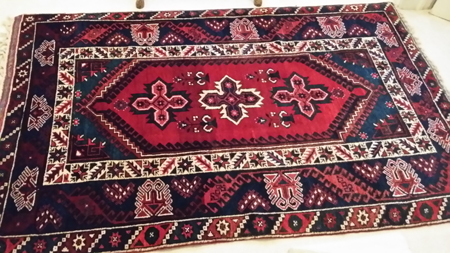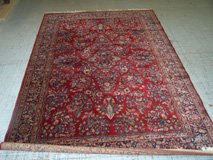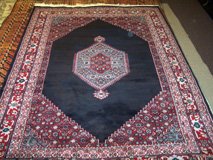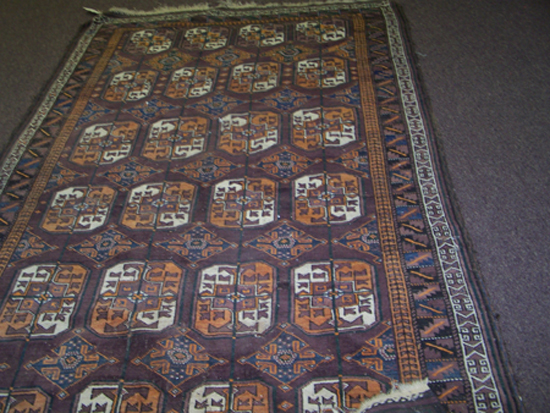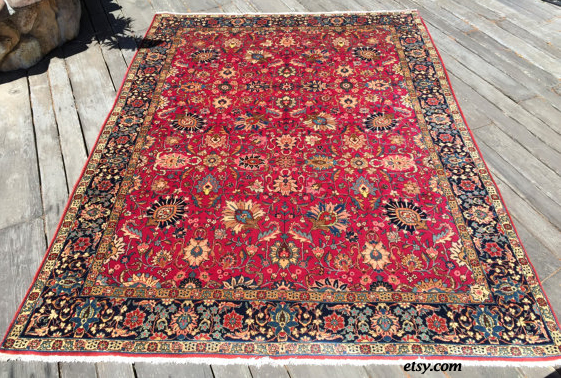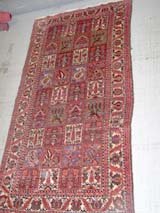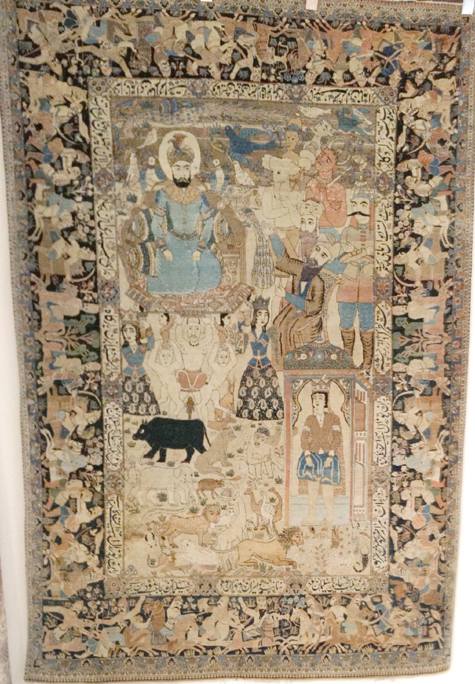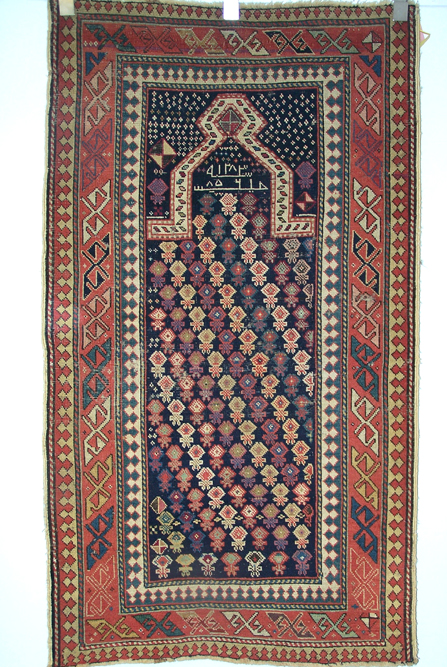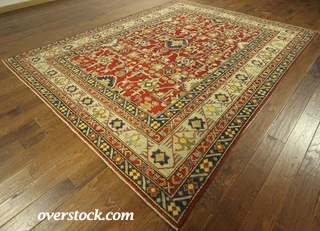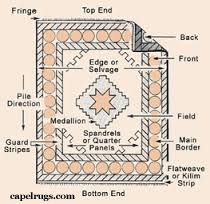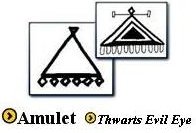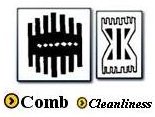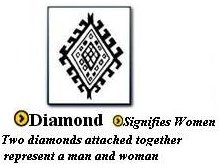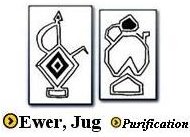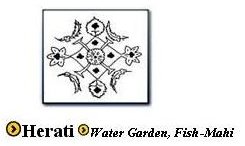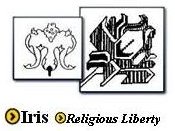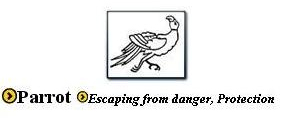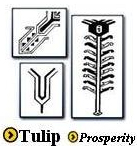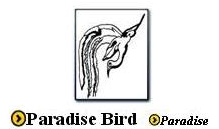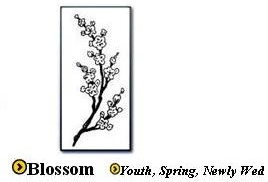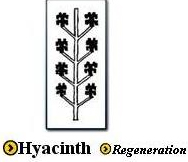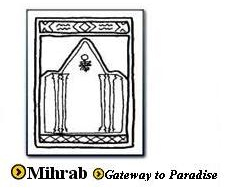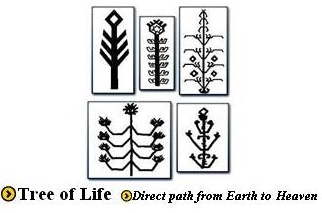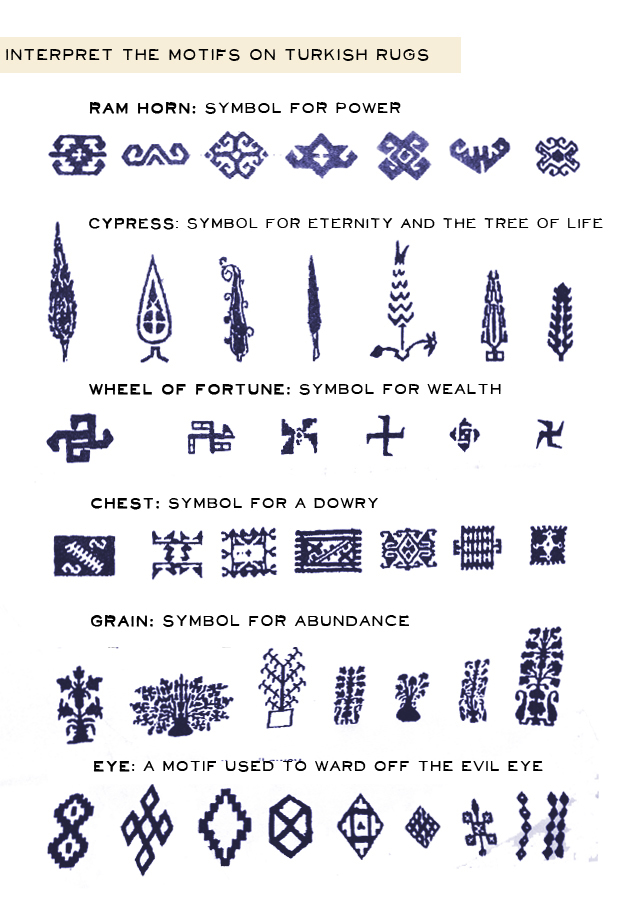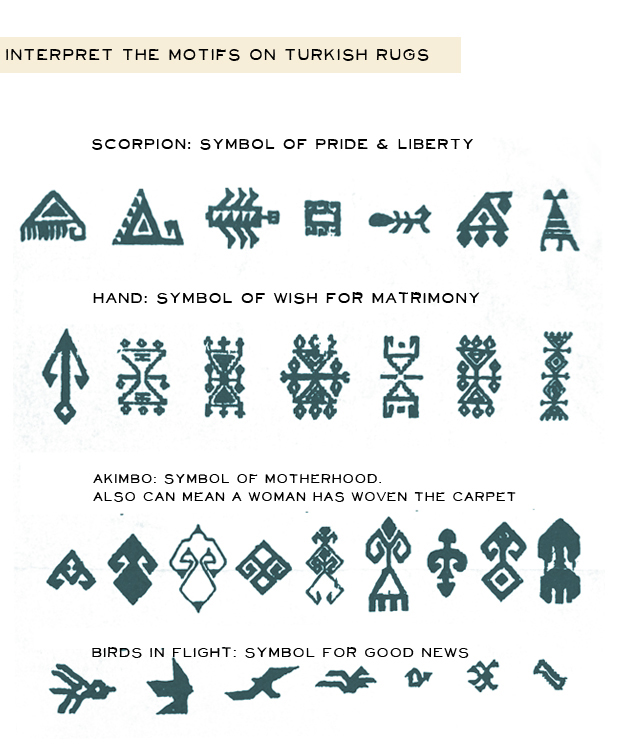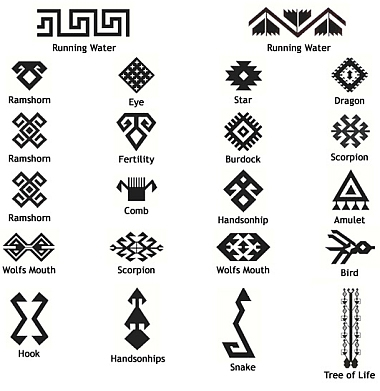ORIENTAL RUG
DESIGN ELEMENTS
Oriental Rugs design elements are a fascinating part of the appeal of these rugs. Oriental Rugs can truly be considered works of art. It is the variety of design elements used to weave a rug that helps determine its value as well as its appeal to an individual buyer.
The design elements can also help give us clues as to where and why a particular Oriental Rug was woven.
The design element value of a rug includes the intricacy of the design as well as the beauty of the motifs and the pattern. With the exception of rugs with an all over, portrait, and panel design, these rugs should be symmetrical.
Rectilinear and
Curvilinear
Oriental Rug Design Elements
Oriental Rug design elements can easily be broken down into 2 major types:
- Rectilinear Designs – mostly geometric motifs and angular patterns.
- Curvilinear Designs – mostly floral motifs and patterns that are usually more intricate.
Rugs may contain both curvilinear and rectilinear patterns.
Fields and Borders
These are the 2 major distinguishing parts of an oriental rug where the Oriental Rug design elements can be found.
Fields
The field is the large area in the center of an oriental rug which contains the main pattern and designs. The field can consist of many different design elements or it may simply have a large area of a solid color (open field). The contents of a field can be broadly categorized as follows:
Open Field
As mentioned above, these rugs have a large area of a solid color in the field which will be surrounded by a series of borders. Examples of open field design can be found in some Caucasian Talish and Kazak rugs, Tibetan, Nepalese, and Sultanabad rugs, etc.
Medallion
These are usually found in the center of the field but can appear in many different styles, number, and sizes. Central medallions can be superimposed on an empty field, or one filled with a repeated motif or an overall pattern.
Repeated Motif
In a repeated motif design, the field will be filled with multiple rows of the same motif and may be combined with the medallion design.
Examples of popular motifs used in oriental rugs are the boteh, herati, Mina Khani, and gul.
Allover Pattern
This type of design has a field filled with a number of motifs that are not in a repeated or regimented form. There may be palmettes and flowers with a network of vines and tendrils (Shah Abbas). Or a vase, tree, garden and other patterns may alternate as well.
Panel
A panel design rug contains a compartmentalized design divided into squares, rectangular shapes, domes, diamond shapes, lattice or trellis patterns, etc. Within those shapes there can typically be found a variety of motifs such as flowers, trees, botehs, stars, palmettes, etc.
Portrait or Pictorial
In this design, landscapes, historic monuments or events, religious scenes, scenes from daily life or folk-lore, and even copies of famous European paintings can be found. These types of designs began to appear by the end of the 18th century.
Prayer
Prayer rugs most often have a prayer niche called a Mihrab (Mehrab) or arch at the top of the field. Stars and urns may also appear. The designs of the prayer rugs may be rectilinear or curvilinear depending upon where the rug was woven.
Borders
The borders of an oriental rug are the series of bands, which may number up to ten or more, that run along the perimeter of the rug surrounding the field.
They usually have repeated motifs such as flowers, rosettes, stars, geometric motifs, etc. You may occasionally find inscriptions in various languages depicting poems, prayers, dedications or possibly the signature of the weaver.
Other Miscellaneous
Oriental Rug
Design Elements
Spandrels
These are located in the 4 corners of a field and may be a solid color or may contain motifs.
Pendants
These are the small elements that can sometimes be found at either the top or the bottom of a medallion or both.
Guard Borders
These are usually narrow borders that can be found ‘guarding’ or ‘protecting’ the main border or borders.
Some Common Persian Oriental
Rug Symbols
(courtesy www.rugs-oriental.net and www.little-persia.com)
Some Common Turkish Rug Symbols
How to Determine the Top and the Bottom of an Oriental Rug
The yarn knots in an oriental rug are tied onto the warp foundation (up and down) cords and then pounded down after being covered by one or more weft (side to side) cords. Thus, it is quite easy to determine which end of the rug is the top and which is the bottom.
By running your hand in either direction, you will discover that if your hand goes ‘against the grain,’ you are heading to the top of the rug. If your hand goes ‘with the grain,’ you are heading in the direction of the bottom of the rug (the direction of the weaving.)
Because of the way light is reflected from the fibers, one end of a rug may look darker than the other. That may not be a defect in the rug but simply a result of the direction of the weaving when it was on the loom.
Summary of
Oriental Rug Design Elements
The study of the different design elements that can be found in oriental rugs is fascinating, though intimidating! The learning process involves looking at (and enjoying) as many rugs as possible (in stores, online, in books). You will begin to see that certain elements are very common, and some are more common on specific types of rugs from different geographical weaving locations.
Compared to determining the exact origin of an oriental rug, recognizing individual design elements is actually much easier and a good direction to take on your journey to a better understanding of Oriental Rug design elements.
Contact Us
We are in the office of ABC at 130 Cecil Malone Drive in Ithaca, NY from 8 to 5 Monday through Thursday, closing at 4:30 on Fridays. We are also open on Saturdays from 10 to 1.
You may call or text us at 607-272.1566. Please leave a message if we are closed.
You can also contact us on the web, by email (info@abcclean.com), and on Facebook.
We will be happy to help you on your journey!
Top of Oriental Rug Design Elements
"The Cleanest Clean You've Ever Seen."
by
ABC Oriental Rug & Carpet Cleaning Co.
130 Cecil Malone Drive Ithaca, NY 14850
607-272-1566
Traditional Persian Rugs
A quick overview of some different types of Persian rugs, specifically from the late 19th and early 20th centuries. These include: BIJAR, FERAHAN, MESHAD, KERMAN, LAVAR KERMAN, and the SULTANABAD.
PERSIAN RUG SYMBOLS
Water was very important for survival.
Gardens represent Paradise or Heaven in Persian lore and include lots of plants and animal life.
Paradise birds represent Paradise.
Parrots are protection symbols and antelopes represent restfulness as to be found in Paradise.
The Boteh or paisley symbol has many meanings. Some see it as a leaf. Others say it represents a seed and the prospect of a new beginning. In India, it was considered to be a symbol of a hand. In the Zoroastrian faith of Iran, it is considered to be a flame.
A Turkish Rug Demo
A salesman demonstrating some Turkish rugs.
Related Reading
Contemporary & Collectible Rugs
Oriental Rugs - Personal Account
Purchasing an Oriental Rug - 5 Guildelines
Assessing the Value of Handmade Rugs
Choosing Wool-Good News or Baaad?
